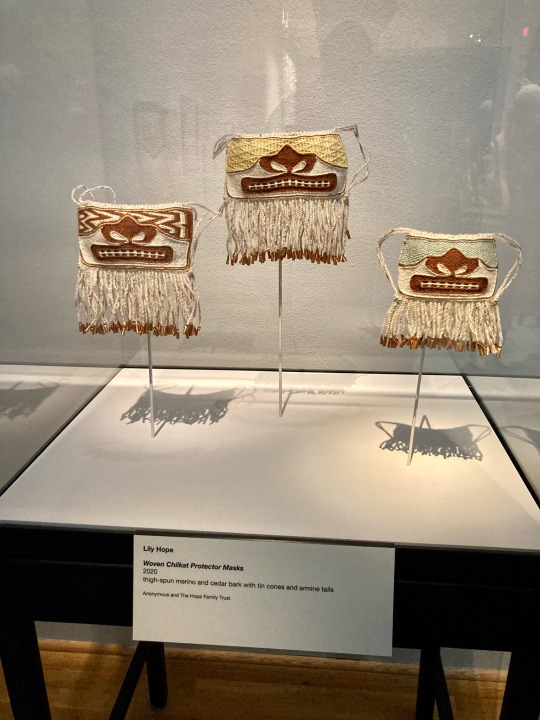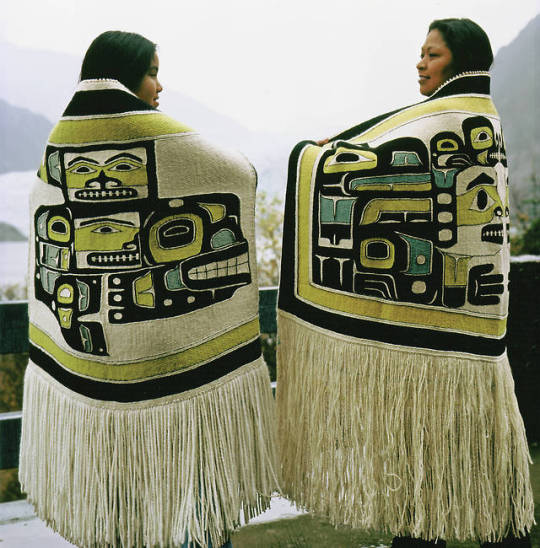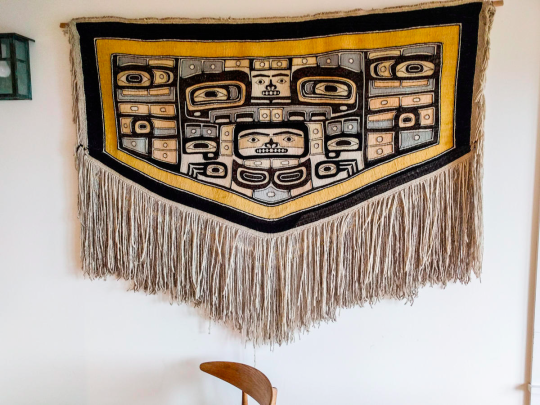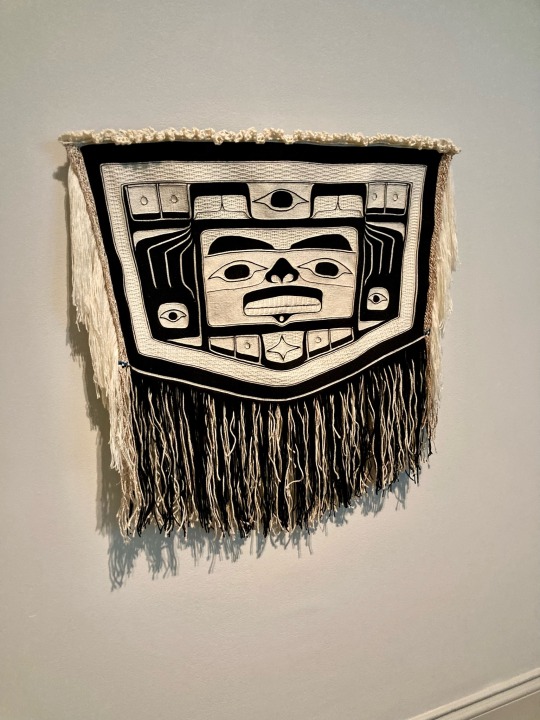#Chilkat
Explore tagged Tumblr posts
Text
#WorldOrcaDay:

Chilkat blanket with Orca design, Tsimshian (Pacific NW Coast)
Twined weave; warp of yellow cedar bark & mountain goats' wool, weft of pure mountain goats' wool
Field Museum no. 19571 (photographed on display in 2022)
#animals in art#animal holiday#museum visit#Field Museum#World Orca Day#orca#orcas#killer whale#killer whales#whale#whales#cetaceans#sea mammals#Pacific Northwest Coast art#Chilkat#Tsimshian#First Nations art#Native American art#Indigenous art#textiles#wool#blanket
75 notes
·
View notes
Text

#IFTTT#Flickr#baldeagle#eagle#americaneagle#wildlife#haliaeetusleucocephalus#chilkat#chilkatriver#chilkatbaldeaglepreserve#bird#birdofprey#nationalbird#nationalbirdofusa#raptor#canon#canon600mmf4lisii#canoneos#canonr5#r5#arvindagrawal
8 notes
·
View notes
Text
I love all the chilkat fanart because yes I ship them, howevef I'm offering you this, davechilkat.
everything is the same dynamics between chil and Karkat, but Dave, he is their stay at home SoundCloud rapper husband they still love and support him
27 notes
·
View notes
Text

. Mountain sheep horn. To hold #oil and grease into which dried fish was dipped. #Tlingit (# #Chilkat) 78510
Mountain sheep hon. To hold oil
2 notes
·
View notes
Text

#face mask#Chilkat#weaving#Tlingit#Native America#COVID 19#Washington DC#Renwick Gallery#Smithsonian
2 notes
·
View notes
Photo
More info on Anna Brown Ehlers (whose amazing work continues), Jennie Thlunaut (who did this art for 75 years) and their work—and on this Japanese program (via web archive).

Anna Brown Ehlers (right) and her art, made using Chilkat weaving techniques. Ehlers is Tlingit, born and raised in Juneau
h/t twitter.com/womensart1
19K notes
·
View notes
Text



Believe it or not, today was my first visit to the Burke Museum ever! After my post the other day marveling that it had been two months since I went to Bend, and realizing I haven't really gone anywhere since, I decided to sneak up to Seattle for an overnight so I could spend today immersed in exhibits.
I'm honestly feeling overwhelmed in a good way; there's just so much... everything there! I will definitely be going back multiple times in the future, but for now I'm just digesting what I saw today.
#museum#Burke Museum#Seattle#Washington#PNW#fossils#paleontology#mammals#Pleistocene#birds#art#Chilkat weaving#Northwest Coast#indigenous art#native art#Tlingit
44 notes
·
View notes
Text
Sealaska Heritage Institute is holding a Chilkat Robe Welcome Home ceremony today that will be broadcasted live (03/01/24) at 12pm pacific time
this is to welcome home a historic chilkat robe that was purchased and donated to SHI. this event and livestream are open to the public.
learn more about Sealaska Heritage Institute here:
36 notes
·
View notes
Link
This piece is on display at the Burke Museum of Natural History and Culture in Seattle. I went there for my birthday and they have great exhibits of indigenous art (and food at the cafe). Seeing the weaving displays, I remembered this story and was telling it to my friends and then we rounded corner and there it was!
Sara Jacobsen, 19, grew up eating family dinners beneath a stunning Native American robe.
Not that she gave it much thought. Until, that is, her senior year of high school, when she saw a picture of a strikingly similar robe in an art history class.
The teacher told the class about how the robe was used in spiritual ceremonies, Sara Jacobsen said. “I started to wonder why we have it in our house when we’re not Native American.”
She said she asked her dad a few questions about this robe. Her dad, Bruce Jacobsen, called that an understatement.
“I felt like I was on the wrong side of a protest rally, with terms like ‘cultural appropriation’ and ‘sacred ceremonial robes’ and ‘completely inappropriate,’ and terms like that,” he said.
“I got defensive at first, of course,” he said. “I was like, ‘C’mon, Sara! This is more of the political stuff you all say these days.’”
But Sara didn’t back down. “I feel like in our country there are so many things that white people have taken that are not theirs, and I didn’t want to continue that pattern in our family,” she said.
The robe had been a centerpiece in the Jacobsen home. Bruce Jacobsen bought it from a gallery in Pioneer Square in 1986, when he first moved to Seattle. He had wanted to find a piece of Native art to express his appreciation of the region.

The Chilkat robe that hung over the Jacobsen dining room table for years. Credit Courtesy of the Jacobsens
“I just thought it was so beautiful, and it was like nothing I had seen before,” Jacobsen said.
The robe was a Chilkat robe, or blanket, as it’s also known. They are woven by the Tlingit, Haida and Tsimshian peoples of Alaska and British Columbia and are traditionally made from mountain goat wool. The tribal or clan origin of this particular 6-foot-long piece was unclear, but it dated back to around 1900 and was beautifully preserved down to its long fringe.
“It’s a completely symmetric pattern of geometric shapes, and also shapes that come from the culture,” like birds, Jacobsen said. “And then it’s just perfectly made — you can see no seams in it at all.”
Jacobsen hung the robe on his dining room wall.
After more needling from Sara, Jacobsen decided to investigate her claims. He emailed experts at the Burke Museum, which has a huge collection of Native American art and artifacts.
“I got this eloquent email back that said, ‘We’re not gonna tell you what to go do,’ but then they confirmed what Sara said: It was an important ceremonial piece, that it was usually owned by an entire clan, that it would be passed down generation to generation, and that it had a ton of cultural significance to them.“
Jacobsen says he was a bit disappointed to learn that his daughter was right about his beloved Chilkat robe. But he and his wife Gretchen now no longer thought of the robe as theirs. Bruce Jacobsen asked the curators at the Burke Museum for suggestions of institutions that would do the Chilkat robe justice. They told him about the Sealaska Heritage Institute in Juneau.
When Jacobsen emailed, SHI Executive Director Rosita Worl couldn’t believe the offer. “I was stunned. I was shocked. I was in awe. And I was so grateful to the Jacobsen family.”
Worl said the robe has a huge monetary value. But that’s not why it’s precious to local tribes.
“It’s what we call ‘atoow’: a sacred clan object,” she said. “Our beliefs are that it is imbued with the spirit of not only the craft itself, but also of our ancestors. We use [Chilkat robes] in our ceremonies when we are paying respect to our elders. And also it unites us as a people.”
Since the Jacobsens returned the robe to the institute, Worl said, master weavers have been examining it and marveling at the handiwork. Chilkat robes can take a year to make – and hardly anyone still weaves them.
“Our master artist, Delores Churchill, said it was absolutely a spectacular robe. The circles were absolutely perfect. So it does have that importance to us that it could also be used by our younger weavers to study the art form itself.”
Worl said private collectors hardly ever return anything to her organization. The federal Native American Graves Protection and Repatriation Act requires museums and other institutions that receive federal funding to repatriate significant cultural relics to Native tribes. But no such law exists for private collectors.

Bruce and Gretchen Jacobsen hold the Chilkat robe they donated to the Sealaska Heritage Institute as Joe Zuboff, Deisheetaan, sings and drums and Brian Katzeek (behind robe) dances during the robe’s homecoming ceremony Saturday, August 26, 2017. Credit NOBU KOCH / SEALASKA HERITAGE INSTITUTE
Worl says the institute is lobbying Congress to improve the chances of getting more artifacts repatriated. “We are working on a better tax credit system that would benefit collectors so that they could be compensated,” she said.
Worl hopes stories like this will encourage people to look differently at the Native art and artifacts they possess.
The Sealaska Heritage Institute welcomed home the Chilkat robe in a two-hour ceremony over the weekend. Bruce and Gretchen Jacobsen traveled to Juneau to celebrate the robe’s homecoming.
89K notes
·
View notes
Text

Anna B Ehlers, a Tlingit of the Chilkat tribe, Alaska, skilled master weaver.
1K notes
·
View notes
Text

(Cowichan elder Dora Wilson)
Since it's definitely sweater season, I felt like doing a deep dive into a really unique and interesting bit of knitting history: the Cowichan sweater, sometimes also called the Canadian sweater.
Spinning and weaving among tribes in the Pacific Northwest is something that goes back to pre-colonial times, using wool from domestic dogs and wild mountain goats.

(photo of the now-extinct breed, the Salish Wool Dog)
The wool was then woven into stunningly warm garments and blankets, like the famous chilkat blanket.

(Chilkat Blanket, Saint Louis Art Museum)
With colonization brought the introduction of domestic sheep, which could be reliably herded and used for wool.
It's not entirely clear who introduced knitting to the Cowichan tribe, but it's clear by the early 20th century, an industry had grown up around selling hand-knit sweaters with traditional Native design motifs on them.


455 notes
·
View notes
Text

Kick off your Fourth of July with the national bird, the Bald Eagle (Haliaeetus leucocephalus)! The Museum’s Bald Eagle Diorama depicts a scene set near Alaska’s Chilkat River. Around November, when the chum salmon spawn and then die, Bald Eagles old and young congregate in numbers to feed upon salmon carcasses. This majestic bird of prey has a wide range throughout North America, soaring high in the sky with a wingspan of up to 8.5 ft (2.6 m)!
You can spot this raptor in the Hall of North American Birds. The Museum is open today from 10 am–5:30 pm! Plan your visit.
Photo: © AMNH
#science#amnh#museum#natural history#nature#animals#fact of the day#did you know#bald eagle#ornithology#birds#alaska#fourth of july#july fourth#diorama
544 notes
·
View notes
Text

#Chilkat weaving#Sister Bear#Ursula Hudson#art#Tlingit#Native America#Renwick Gallery#Smithsonian#Washington DC
4 notes
·
View notes
Text

Chilkat Eagle Panel
Don Yeomans
136 notes
·
View notes
